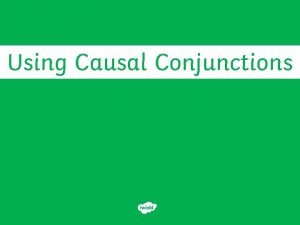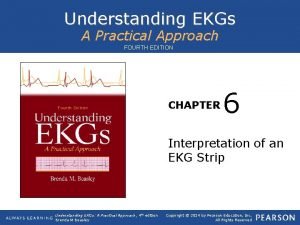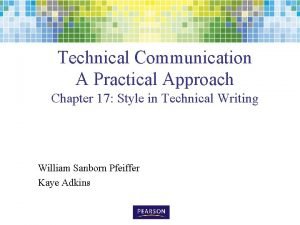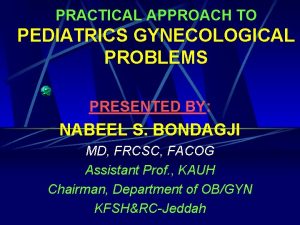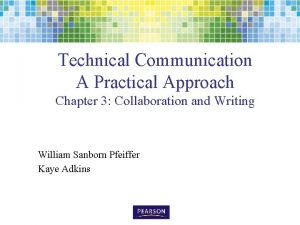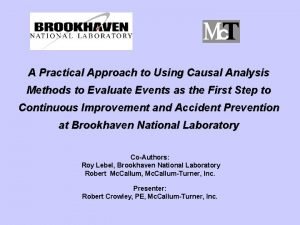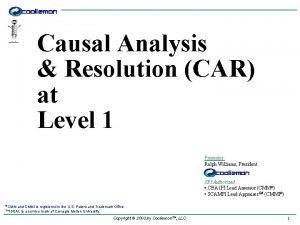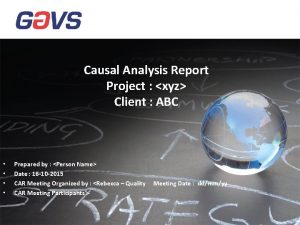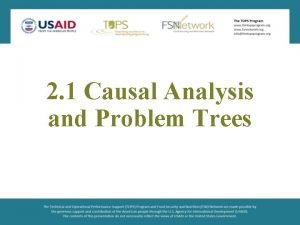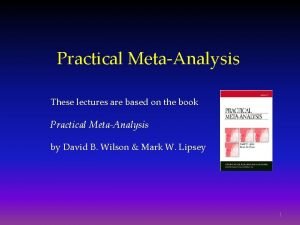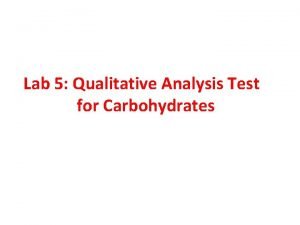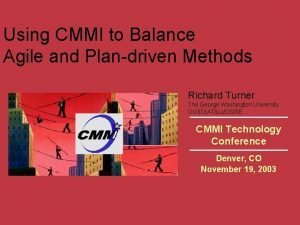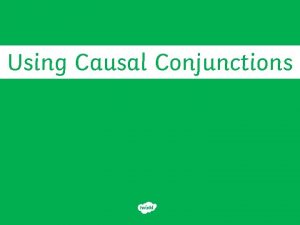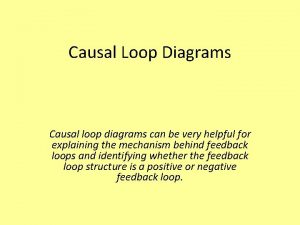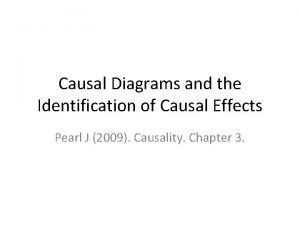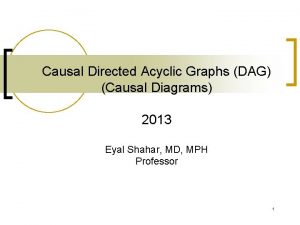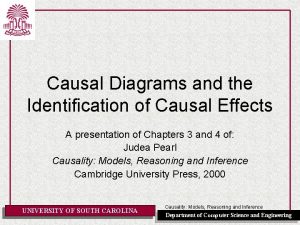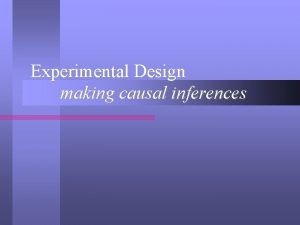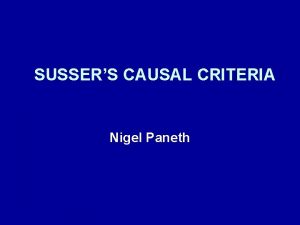A Practical Approach to Using Causal Analysis Methods














- Slides: 14

A Practical Approach to Using Causal Analysis Methods to Evaluate Events as the First Step to Continuous Improvement and Accident Prevention at Brookhaven National Laboratory Co-Authors: Roy Lebel, Brookhaven National Laboratory Robert Mc. Callum, Mc. Callum-Turner, Inc. Presenter: Robert Crowley, PE, Mc. Callum-Turner, Inc.

Brookhaven National Laboratory Issues Management Process Improvement Initiative • BNL determined their issues management process was deficient and embarked on an initiative institutionalize an Issues Management Program for both reportable and nonreportable events and issues as part of an accident/event prevention strategy • Several Key improvements were implemented including: – Defining “lower level issues” for line management to evaluate – Training on the conduct of “Critiques” to improve fact finding – Training for staff and managers on Causal Analysis Methods

Why Implement this Strategy? üPrevent More Serious Events from Occurring by Focusing on Review and Analysis of Low Significance (low-level) Events ORPS/ACCIDENTS/PAAA Spills SCBNL Incidents Conditions Radiological Awareness Reports Nonconformances Tier 1 Assessments Audits

Insert the flowchart here?

Causal Analysis Methods • There a myriad of credible causal analysis methods ranging from simple to complex • DOE has guides and standards addressing causal analysis including: – DOE-G 231. 1 “Occurrence Reporting Casual Analysis Guide” – DOE-NE- STD-1004 -92 “Root Cause Analysis Guidance Document” – DOE O 225. 1 A “Accident Investigation Guidance Document” • Brookhaven National Laboratory also has guidance that addresses Causal Analysis methods “Causal Analysis Methodologies” that is part of the BNL SBMS System 2/23/2021 5

Brookhaven AccidentIssues Prevention Causal Analysis Strategy Focus of the Strategy: • Line organizations would analyze the causes of lower level less complex events • Analytical methods used will be recognized by both Brookhaven National Laboratory and the Department of Energy • Develop case studies tailored to both research and support organizations • Formally train line organizations on “simple” analytical methods that can be readily used after limited training 2/23/2021 6

Brookhaven AccidentIssues Prevention Causal Analysis Strategy (Phase I) • The first training session was conducted in August 2006 at Brookhaven National Laboratory • Focused on “Barrier Analysis” and introduction to the “Five Whys” analytical method • Simple analytical methods used effectively by BNL and DOE for event and accident investigations • Short training sessions (4 hours) were conducted with case studies developed for ERWM and research organizations based on DOE incidents • 60 Brookhaven National Laboratory managers and staff were trained and provided a case study for future reference 7

Brookhaven AccidentIssues Prevention Causal Analysis Strategy (Phase II) • The second training session was conducted in December 2006 at Brookhaven National Laboratory • Focused on “Events and Casual Factor Analysis” and application of the “Five Whys” analytical methods (with an HPI flavor) • Simple analytical methods used effectively by BNL and DOE for event and accident investigations • Short training sessions (6 hours) were conducted with a case study based on a DOE accident in a research laboratory • Approximately 40 Brookhaven National Laboratory managers and staff were trained and provided a case study for future reference 8

“ HPI Flavor ” Using Anatomy of Event Flawed Defenses Vision, Beliefs, & Values on Missi Goals es Polici es ss Proce s am Progr Event Initiating Action Latent Organizational Weaknesses 2/23/2021 Error Precursors 9

“HPI Flavor” Anatomy of Event – Error Precursors Task Demands • Time pressure (in a hurry) • High Workload (memory requirements) • Simultaneous, multiple tasks • Repetitive actions, monotonous • Irrecoverable acts • Interpretation requirements • Unclear goals, roles, & responsibilities • Lack of or unclear standards Environment Work Environment • Distractions / Interruptions • Changes / Departures from routine • Confusing displays or controls • Workarounds / OOS instruments • Hidden system response • Unexpected equipment conditions • Lack of alternative indication • Personality conflicts 2/23/2021 Individual. Capabilities Individual • Unfamiliarity w/ task / First time • Lack of knowledge (mental model) • New technique not used before • Imprecise communication habits • Lack of proficiency / Inexperience • Indistinct problem-solving skills • “Hazardous” attitude for critical task • Illness / Fatigue Human Nature • Stress (limits attention) • Habit patterns • Assumptions (inaccurate mental picture) • Complacency / Overconfidence • Mindset (“tuned” to see) • Inaccurate risk perception (Pollyanna) • Mental shortcuts (biases) • Limited short-term memory 10

The Five Whys Visual Depiction of Causal Factor Analysis Using “Five Whys” Condition 3 Condition 2 Condition 1 Event 1 2/23/2021 Why 1 Causal Factor 3 Why 1 Why 2 Causal Factor 2 Condition 5 Why 1 Why 2 Causal Factor 1 Condition 4 Why 1 Why 2 Causal Factor 4 Event 2 11

The Five Whys Visual Depiction of Identification of Root Cause Using Five Whys Collect CFs Causal Factor 1 Causal Factor 2 Causal Factor 3 Causal Factor 4 Identify Common CFs Causal Factor 1, 2 Causal Factor 3 Apply Five Whys Technique Root Cause Causal Factor 4, 5 Causal Factor 5 2/23/2021 12

The Five Whys What are the organizational conditions that are more conducive for the Five Whys to be successful? • A “culture” where problems are surfaced quickly • A “culture” where identification of needed actions are viewed as an opportunity to move to an ideal or improved state of performance • A “culture” where the focus is on improving processes and systems • The above are examples of HPI principles and the “learning culture” Brookhaven National Laboratory is institutionalizing 2/23/2021 13

Conclusion • Brookhaven National Laboratory trained over 100 managers and staff in “simple” causal analysis methods. • Training incorporating the “Error Precursor Short List” resulted in identification of approximately 20% more conditions for analysis in case studies used for training. • Brookhaven National Laboratory Causal Analysis Implementation Strategy using these “simple” methods is being used across Laboratory Organizations that experienced “lower level” events. • No Type A or Type B Accidents since beginning this initiative. 2/23/2021 14
 Example of causal conjunction
Example of causal conjunction Understanding ekgs a practical approach
Understanding ekgs a practical approach Technical writing style
Technical writing style Practical approach pediatrics
Practical approach pediatrics Technical communication a practical approach
Technical communication a practical approach Direct wax pattern technique
Direct wax pattern technique Causal analysis
Causal analysis 2 key deliverables for causal analysis process
2 key deliverables for causal analysis process Causal layered analysis
Causal layered analysis Causal analysis report
Causal analysis report Causal analysis and resolution examples
Causal analysis and resolution examples Practical meta-analysis
Practical meta-analysis Microsoft threat modeling tool
Microsoft threat modeling tool Qualitative analysis of carbohydrates practical
Qualitative analysis of carbohydrates practical Using risk to balance agile and plan driven methods
Using risk to balance agile and plan driven methods
